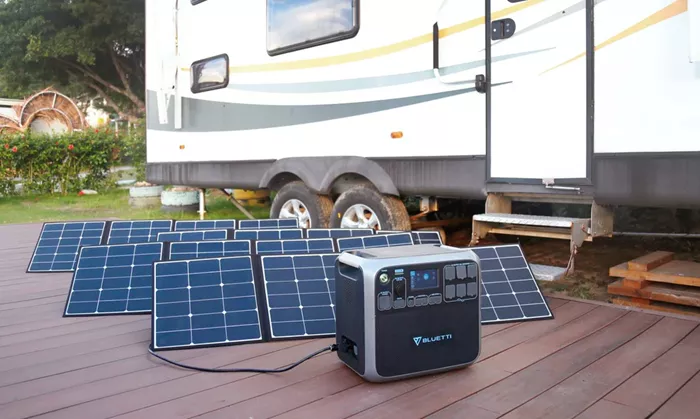Generators with 7,000 charge cycles represent a significant advancement in energy storage technology. These high-capacity systems are particularly useful when integrated with solar panels, offering a reliable and efficient way to manage energy needs over long periods. This article delves into the features, benefits, and considerations of using a generator with 7,000 charge cycles in conjunction with solar panels.
Understanding Charge Cycles in Generators
What Are Charge Cycles?
A charge cycle refers to the process of charging and discharging a battery or generator system. Each complete cycle involves the battery being charged to its full capacity and then discharged until it reaches a low level before being recharged again. The number of charge cycles a generator can handle indicates its longevity and overall durability.
Why Are 7,000 Charge Cycles Significant?
Generators with 7,000 charge cycles are designed to endure extensive use over many years. This high number of charge cycles means the generator can be fully charged and discharged 7,000 times before experiencing significant degradation. This extended lifespan is crucial for maintaining consistent power output and reducing the need for frequent replacements.
Integration with Solar Panels
How Solar Panels Work
Solar panels capture sunlight and convert it into electricity through photovoltaic cells. This process generates direct current (DC) electricity, which is then converted to alternating current (AC) by an inverter for use in household appliances. Solar panels are highly efficient in sunny conditions but can produce less power during cloudy days or at night.
Benefits of Combining Generators with Solar Panels
- Enhanced Reliability: Solar panels provide a renewable energy source, but their output can be inconsistent. Integrating a generator with 7,000 charge cycles ensures a backup power supply during periods when solar energy is insufficient.
- Energy Storage: A generator with a high number of charge cycles can store excess energy generated by solar panels. This stored energy can be used during periods of low solar production or high demand, providing a reliable power source around the clock.
- Reduced Dependency on Grid Power: By combining solar panels with a high-capacity generator, homeowners can significantly reduce their reliance on the grid, leading to lower energy bills and increased energy independence.
Advantages of High-Cycle Generators
Longevity and Durability
Generators with 7,000 charge cycles are built to withstand extensive use, offering superior longevity compared to standard models. This durability is achieved through advanced battery technology and robust design features that minimize wear and tear.
Cost-Effectiveness
Although high-cycle generators may have a higher initial cost, their long-term benefits often outweigh the expense. The extended lifespan and reduced need for replacements translate into lower overall costs over time.
Improved Efficiency
High-cycle generators are designed to operate efficiently, with features that optimize energy storage and usage. This efficiency helps to maximize the benefits of solar panels and ensures that energy is used effectively.
Key Considerations When Choosing a Generator
Capacity and Power Output
When selecting a generator, consider its capacity and power output to ensure it meets your energy needs. A generator with a high number of charge cycles should also have sufficient capacity to handle your household’s energy requirements.
Compatibility with Solar Panels
Ensure that the generator is compatible with your solar panel system. This includes checking that the generator can integrate with your inverter and energy management system.
Maintenance and Upkeep
Regular maintenance is essential for ensuring the longevity and performance of your generator. Follow the manufacturer’s recommendations for maintenance schedules and procedures to keep the system in optimal condition.
Environmental Impact
Consider the environmental impact of the generator, especially if it uses fossil fuels. Opting for a generator that is designed to work efficiently with renewable energy sources can help minimize your carbon footprint.
see also: Can Solar Panels Run a Generator
Conclusion
A generator with 7,000 charge cycles offers a robust solution for enhancing the reliability and efficiency of a solar panel system. Its extended lifespan, durability, and ability to provide consistent power make it an ideal choice for ensuring uninterrupted energy supply. By integrating such a generator with solar panels, homeowners can achieve greater energy independence and optimize their energy use.
Incorporating a high-capacity generator into your solar energy setup not only extends the benefits of solar power but also ensures that you are prepared for any fluctuations in energy production. This combination provides a comprehensive approach to energy management, balancing renewable energy with reliable backup power.
FAQs:
What is the difference between a generator with 7,000 charge cycles and one with fewer cycles?
A generator with 7,000 charge cycles is designed to last significantly longer than one with fewer cycles. This higher number indicates greater durability and longevity, making it more suitable for extensive use and reducing the need for frequent replacements.
How do I integrate a high-cycle generator with my solar panel system?
To integrate a high-cycle generator with your solar panel system, ensure compatibility with your inverter and energy management system. Consult with a professional to set up the system correctly and optimize its performance.
Are high-cycle generators more expensive than standard generators?
Yes, high-cycle generators typically have a higher initial cost due to their advanced technology and durability. However, their long-term benefits and reduced need for replacements often make them more cost-effective over time.
What maintenance is required for a generator with 7,000 charge cycles?
Regular maintenance is crucial for maintaining the performance and longevity of a high-cycle generator. Follow the manufacturer’s maintenance schedule, which may include tasks such as checking battery levels, inspecting connections, and performing routine service checks.
Related topics:
- Can a Solar Generator Power a Freezer?
- How To Build Solar Generator Yourself: A Step-by-Step Guide
- Do Solar Generators Work on Cloudy Days?

